Blood pressure is quite literally the pressure of blood against the walls of your blood vessels when your heart is pumping blood throughout your body. Systolic is the pressure against your blood vessels while your heart is contracting and is typically safe between 110-140mmHg. Diastolic is the pressure against your blood vessels when your heart is relaxed and normal ranges from 80-90mmHg. Hypertension, or high blood pressure, is a Systolic reading over 140 or Diastolic reading over 90 or both.
High blood pressure is the leading cause of kidney disease and one of the contributing causes of heart disease. High blood pressure may be a sign that your kidneys are not working properly. In a single day they filter the entire volume of blood in your body 30 to 40 times, extracting two quarts of waste products and extra water that’s removed in the form of urine. In addition to acting as filters, the kidneys keep track of various substances in the blood and, if necessary, release hormones to help replenish missing stock. Sodium is an electrolyte that influence blood pressure by contributing to fluid balance within the body. Excessive Sodium intake limit’s the body’s ability to rid the body of excess fluid leading to increased fluid retention and increased pressure on blood vessels. To manage high blood pressure, you may need to limit sodium to 1500mg a day or less. It is also helpful to eat foods that contain potassium as this electrolyte aids with sodium excretion to help lower blood pressure. A goal of 3-4gm a day is ideal for managing blood pressure and ensuring an adequate potassium intake for your health.
High Potassium Foods
 | Tomatoes Tip: try as pasta sauce, in salads, on sandwiches, or just by the slice |
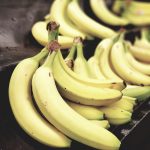 | Bananas Tip: eat as is, frozen as an ice cream alternative or added to smoothies |
 | Avocados Tip: guacamole, avocado toast, as a spread, or in a smoothie |
 | Oranges Tip: don’t let peeling be a barrier–buy a $1 plastic peeler. |
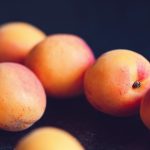 | Apricots Tip: try eating them dried as a snack |
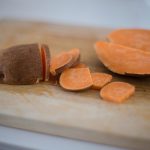 | Sweet Potatoes Tip: roast, or slice and serve as sweet potato fries |
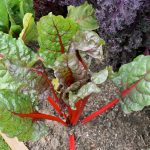 | Swiss Chard Tip: great for sautéing |
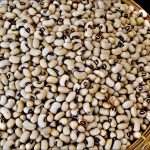 | White Beans Tip: Pulse in a food processor, add garlic and herbs to make a tasty dip |
Below are some high potassium recipes to aid with managing high blood pressure:
Garlicky Swiss Chard (high potassium)
- 2 bunches Swiss chard, stems removed
- 1 tablespoon olive oil
- 2 garlic cloves, minced
- Large pinch crushed red pepper flakes
- Pinch of Salt
To prepare: Stack chard leaves on top of one another (you can make several piles) and slice them into 1/4-inch strips. Heat oil in a very large skillet (or use a soup pot). Add garlic and red pepper flakes and sauté for 30 seconds, until garlic is fragrant. Stir in the chard, coating it in oil. Cover pan and let cook for about 2 minutes, until chard is wilted. Uncover, stir and cook for 2 minutes longer. Season with salt. Serves 4.
Honey Roasted Sweet Potatoes (high potassium)
- 2 pounds sweet potatoes
- 2 tablespoons olive oil
- 2 tablespoons honey
- 1 teaspoon fresh lemon juice
- 1/2 teaspoon salt
To prepare: Preheat oven to 350 degrees F. Peel and cut the sweet potatoes into 1-inch pieces and put in a 9 by 13 baking dish. In a small bowl whisk together olive oil, honey and lemon juice. Pour mixture over potatoes and toss to coat. Sprinkle with the salt, and bake, stirring occasionally, for about 1 hour, until potatoes are tender. Serves 6.
Peanut butter and banana breakfast quesadillas (high potassium)
- 3 ripe bananas
- 3 TB creamy peanut butter
- ¼ tsp ground cinnamon
- 4 8-inch whole wheat flour tortillas
- Non-stick cooking spray
To prepare: Peel and slice bananas about ¼ inch thick. In a medium bowl stir together peanut butter and cinnamon. Spread 1 TB peanut butter over half of each tortilla. Divide banana slices among the four tortillas spreading in a single layer over the peanut butter. Fold each tortilla in half. Heat a nonstick skillet and coat with cooking spray. Place folded tortillas in heated skillet and cook for 2 minutes per side until golden and crisp. Serve warm. Serves 4.
Vegetable and Farro Soup (high potassium)
- 2 teaspoons extra virgin olive oil
- 1 cup chopped onion
- 1/2 cup chopped carrot
- 3 cloves garlic, minced
- 3/4 cup uncooked farro
- 1/2 teaspoon salt
- 1/2 teaspoon freshly ground black pepper
- 1 (14.5-ounce) can reduced-sodium vegetable or chicken stock
- 2 bay leaves
- 1 sprig thyme or 1 tsp dried thyme
- 2 cups chopped kale
- 2 cups cooked cannellini beans
- 1 (14.5-ounce) can reduced-sodium diced tomatoes, undrained
- 1/4 cup (1 ounce) grated Parmigiano-Reggiano cheese
To prepare: Heat oil in dutch oven over medium-high heat. Add onion, carrot and garlic. Sauté for 5 minutes, stirring frequently. Stir in 2 cups water, farro, salt, pepper, stock, bay leaves, and thyme, and bring to a boil. Cover, reduce heat and simmer for 30 minutes. Add spinach, beans and tomatoes, and bring to a boil. Reduce heat and simmer for 5 minutes. Discard bay leaves and serve. Garnish each serving with cheese. Serves 6.
Roasted crunchy chickpeas (high potassium)
- 1 can chickpeas (also known as garbanzo beans), rinsed, drained and patted dry
- 1 TB olive oil
- ½ tsp cumin
- ½ tsp cayenne or chili powder
- ½ tsp ground coriander
- ¼ tsp salt
To prepare: Preheat oven to 400 degrees F. Place chickpeas on baking sheet and pat dry. Roast chickpeas for 20 minutes. Take them out of the oven and drizzle olive oil and spices on them stirring them until the chickpeas are evenly coated. Roast spiced chickpeas for another 10 minutes then turn off the oven. While oven cools, allow chickpeas to sit in oven another 30 minutes to ensure crunchiness. Remove from oven and allow chickpeas to cool for 30 minutes then serve as a snack or on a salad. Store at room temperature in an airtight container for 1-2 days. Serves 4.
Banana Nut Muffins (high potassium) (Recipe adapted from foodnetwork.com)
- 2 cups whole wheat flour
- 1 1/2 teaspoons baking soda
- 1/2 teaspoon salt
- 4 overripe bananas
- 1 cup brown sugar
- 3/4 cup vegetable oil such as canola oil
- 2 eggs
- 1 teaspoon pure vanilla extract
- 1/2 cup pecans, chopped
To prepare: Preheat oven to 375 degrees F. Line a 12-cup muffin tin with paper liners. In a large bowl, combine the flour, baking soda, and salt; set aside. Mash 2 of the bananas with a fork in a small bowl so they still have a bit of texture. With an electric mixer fitted with a wire whisk, whip the remaining bananas and sugar together like you mean it, for a good 3 minutes. Add the oil, eggs, and vanilla and beat well, scraping down the sides of the bowl once or twice. Mix in the dry ingredients just until incorporated. Fold in the nuts and the mashed bananas with a rubber spatula. Spoon the batter into the muffin tins to fill them about halfway. Give them a rap on the counter to get any air bubbles out. Bake until a toothpick stuck in the muffins comes out clean, 18 to 20 minutes. Let cool for a few minutes before turning the muffins out. Serve warm or at room temperature. Serves 12.